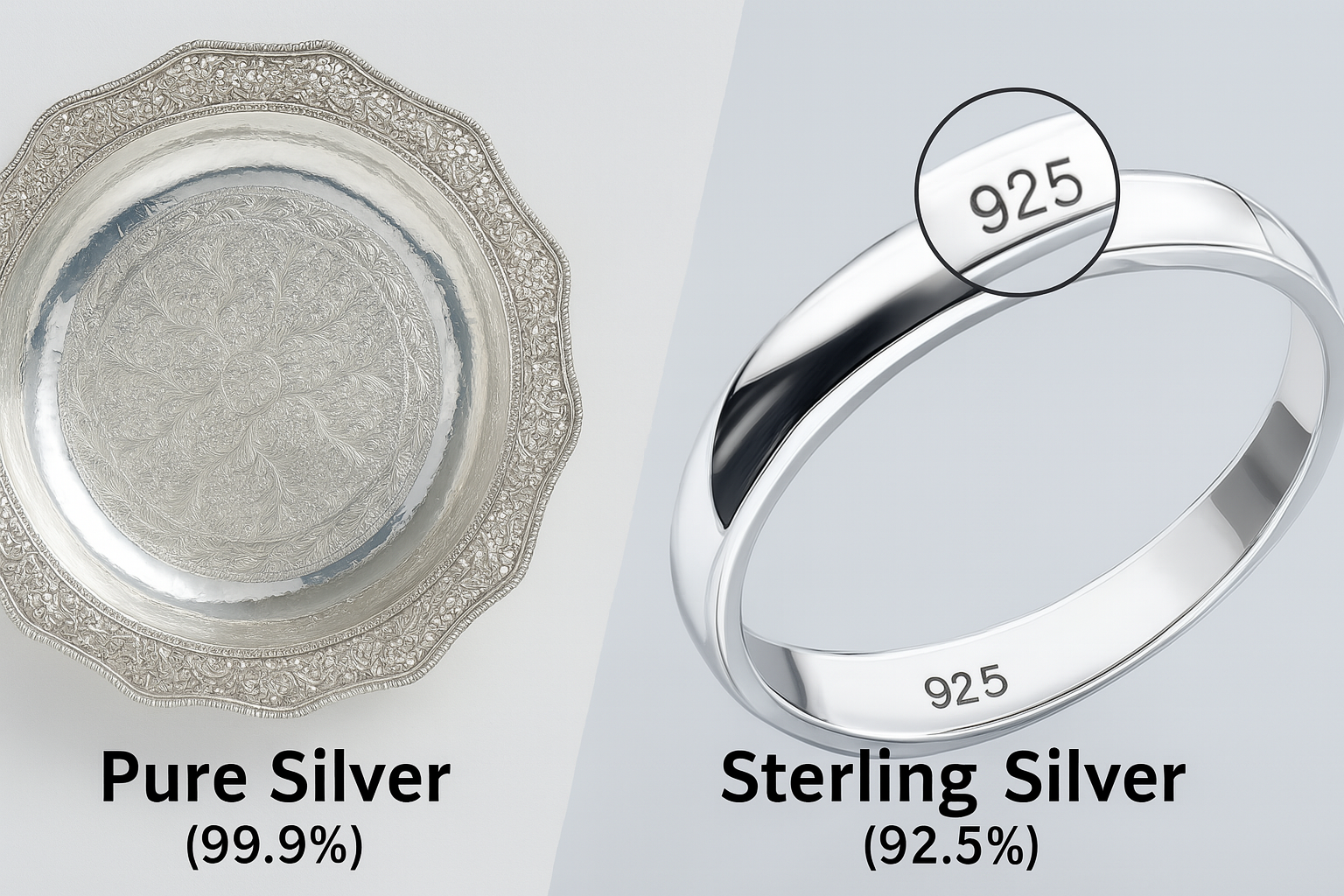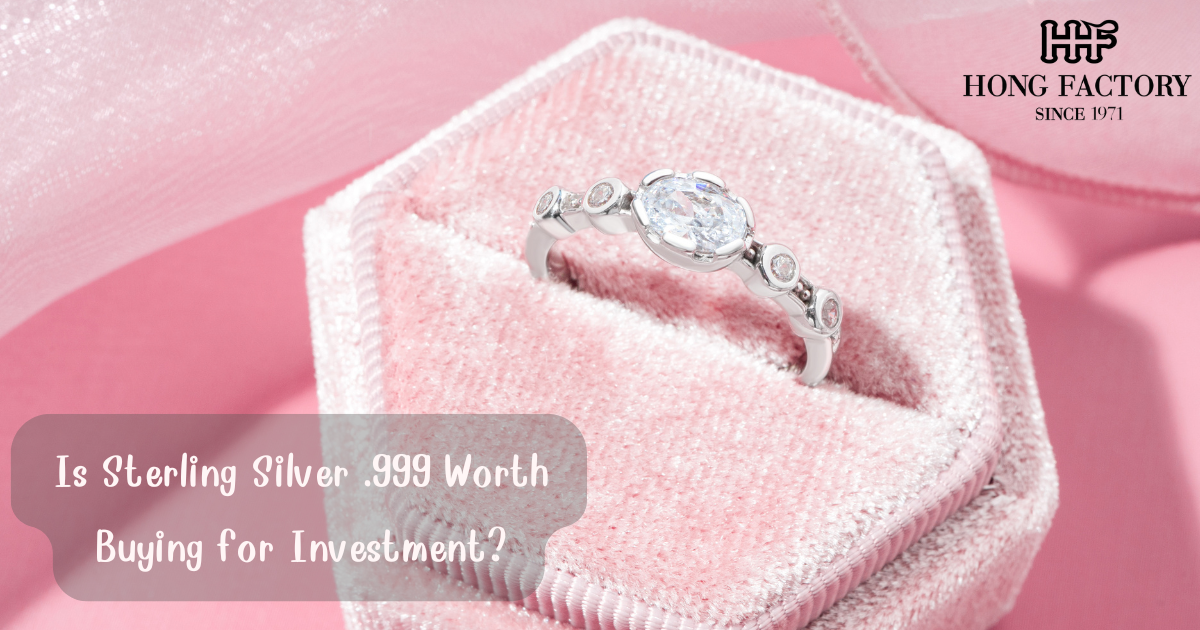Silver has always been a symbol of wealth, craftsmanship, and timeless beauty. Among its various purities, .999 sterling silver often referred to as fine silver stands out for its exceptional purity and brilliance.
But when it comes to investing, many wonder: is it actually a smart choice? This article explores the value of “Is Sterling Silver .999”, examining its role in modern investment portfolios, long-term worth, and practical buying considerations. sterling silver meaning

Understanding What .999 Silver Represents
The term .999 silver refers to silver that is 99.9% pure. It contains almost no other metals or alloys, making it the purest form of silver available for commercial use. Because of this, it’s often used for bullion bars, coins, and investment-grade collectibles. The remaining 0.1% is composed of trace impurities that occur naturally during refining.
In contrast, .925 sterling silver commonly used in jewelry contains 92.5% silver and 7.5% other metals, typically copper. While sterling silver is ideal for durable, wearable designs, .999 silver is valued for purity and intrinsic worth rather than practicality.
Is Sterling Silver .999 Worth Buying for Investment?
Yes, .999 silver is worth buying as an investment, especially for individuals looking for a tangible asset that maintains long-term value. Because it’s nearly pure, its worth closely follows global silver market prices. Unlike sterling silver, fine silver can be melted, traded, and sold based on weight without deductions for alloy content.
Investors often buy .999 silver in the form of:
- Silver bars and ingots – favored for bulk investment.
- Silver coins – such as American Eagles or Canadian Maple Leafs.
- Medallions and rounds – produced by private mints with limited-edition designs.
These forms of fine silver are easy to store, verify, and resell, making them an attractive option for both beginner and seasoned investors.
Why .999 Silver Is Valuable
Several factors make .999 silver an appealing investment:
- Purity and Standardization: The .999 hallmark ensures consistency, giving investors confidence in the metal’s purity and weight.
- Liquidity: Fine silver can be traded globally through dealers, exchanges, and private markets.
- Inflation Hedge: Like gold, silver retains value during economic uncertainty, providing a hedge against inflation and currency fluctuations.
- Tangible Asset: Physical silver is immune to cyber risks or digital manipulation, unlike stocks or cryptocurrency.
- Industrial Demand: Silver’s role in electronics, solar panels, and medical applications ensures steady market demand.
Together, these characteristics make .999 silver a stable, long-term store of wealth.

Comparing .999 Silver with .925 Sterling Silver
When it comes to investment, .999 silver has an advantage over .925 sterling silver. Sterling silver’s additional alloys reduce its melt value, meaning it’s worth slightly less per ounce. Sterling pieces are better suited for jewelry or decorative use, while fine silver is preferred for investment.
That said, antique or designer sterling silver pieces can sometimes appreciate in value due to artistry or rarity something that pure silver bars lack. Investors should distinguish between metal value and collectible value when deciding what to purchase.
How to Invest in .999 Silver Safely
If you’re considering adding fine silver to your portfolio, follow these guidelines:
- Buy from Reputable Dealers: Look for certified bullion sellers or government mints.
- Verify Hallmarks: Ensure items are stamped “.999” or “999 Fine Silver.”
- Check Current Market Prices: Silver’s spot price changes daily; purchase during dips to maximize returns.
- Consider Storage: Keep silver in a secure, dry place or a safety deposit box to avoid oxidation or theft.
- Diversify: Don’t invest all funds in silver balance with other precious metals or financial assets.
These precautions help protect your investment and ensure authenticity.
Pros and Cons of Investing in .999 Silver
Pros:
- High purity and global recognition.
- Affordable entry point compared to gold.
- Useful for portfolio diversification.
- Tangible and inflation-resistant.
Cons:
- Larger storage space required than gold for equivalent value.
- Price volatility influenced by industrial demand.
- Minimal yield profits depend on price appreciation.
While not as valuable per ounce as gold or platinum, silver offers a balance of accessibility and long-term security.

The Long-Term Outlook for Silver Prices
Silver’s price trend is shaped by both industrial consumption and investor sentiment. As global industries increasingly rely on silver for technology, renewable energy, and healthcare, demand continues to rise. Analysts predict that silver could appreciate in value over the next decade, particularly with advancements in solar technology and electric vehicles.
Fine silver’s intrinsic worth makes it a long-term asset that can be sold or passed down through generations, offering stability even in fluctuating markets.
When .999 Silver May Not Be the Best Option
If your goal is short-term profit or lightweight convenience, .999 silver might not be ideal. It’s a long-term investment value builds gradually as global silver prices rise. Additionally, storage and insurance costs can add up if you hold significant quantities.
For those seeking immediate liquidity, small silver coins or ETFs (Exchange-Traded Funds) linked to silver may be more practical.
So, is sterling silver .999 worth buying for investment? Absolutely if you’re seeking a tangible, inflation-resistant asset with steady global demand. Its purity ensures that its value remains tied to the real price of silver, making it one of the most trusted precious metals for collectors and investors alike.
Whether in the form of bars, coins, or medallions, .999 silver offers both aesthetic beauty and financial security a perfect balance between craftsmanship and long-term wealth preservation.
